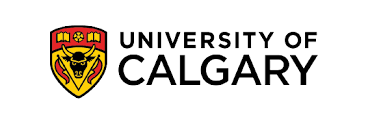University of Calgary: Aerospace industry resilience shows that ‘slow and steady wins the race’ in times of crisis
Fail fast. Move at speed. Keep ahead of the competition. Common corporate knowledge would have you believe going fast is the key to success, particularly if a company is hit by a crisis. But that’s not always the case.
In pre-pandemic research exploring how industry clusters respond to external shocks, Dr. Pengfei Li, PhD associate professor in strategy and global management at the Haskayne School of Business, and colleagues, found that slow and steady can win the race.
In The Tortoise and the Hare: Industry Clockspeed and Resilience of Production and Knowledge Networks in Montréal’s Aerospace Industry, Li and Dr. Ekaterina Turkina, associate professor, and Ari Van Assche professor, both at HEC Montréal, examined how the aerospace industry in Montréal fared in crisis.
Their research occurred after two of the leading firms in the sector, Boeing and Bombardier, had experienced significant industrial shocks: Boeing’s 737 MAX plane crashes in 2018 and 2019 and Bombardier selling off its flagship CSeries in 2020.
“Boeing and Bombardier were under pressure in these crises. But the key point is they still protected their suppliers,” says Li. “They continued to buy from their suppliers. So their suppliers were able to go through the learning curve, build their scale economy and lower their costs in the long run.”
This “low industry clock speed” stabilized local production and knowledge networks with long-term contracting, sharing of research and development costs, planning production, social networking and solidifying technology. Despite the crises, Boeing and Bombardier were thinking “in the long run.”
Other industries such as fast fashion think in cycles of weeks or months and will pressure their suppliers to lower their costs at any hint of crisis.
“Every season, every year, you are able to know whether a short-lived product makes a profit. This quick calculation of product performance pushes firms in fast-speed fields to squeeze their suppliers to lower production costs,” says Li. “In fashion supply chains, for example, we see labor exploitation, environmental scandals, and other corporate social responsibility issues.”
But original equipment manufacturer (OEM) firms in slow-paced sectors are better off looking years ahead, well past temporary disturbances. The researchers found Montreal’s aerospace industry “performed quite well” in the wake of Boeing and Bombardier’s shocks due to the sector’s low-clock speed.
“The basic logic is this is a long-term game,” he says. “An aircraft’s development, production and sales cycles last in decades, during which OEM firms work together with their suppliers to polish the model design and learn how to make it efficiently to lower the overall cost, and then make profit. They didn’t want to squeeze suppliers even during crises.”
In the case of external shocks, this “slow but steady” speed of change can offer a competitive advantage to firms and regions. Policies and strategies that facilitate fast innovation may not always help build resilient clusters and vibrant regional economies. The researchers suggest policy-makers and corporate managers consider industry clock speed and remember that in the old fable, the slow moving tortoise won the race.

